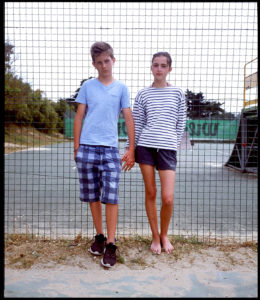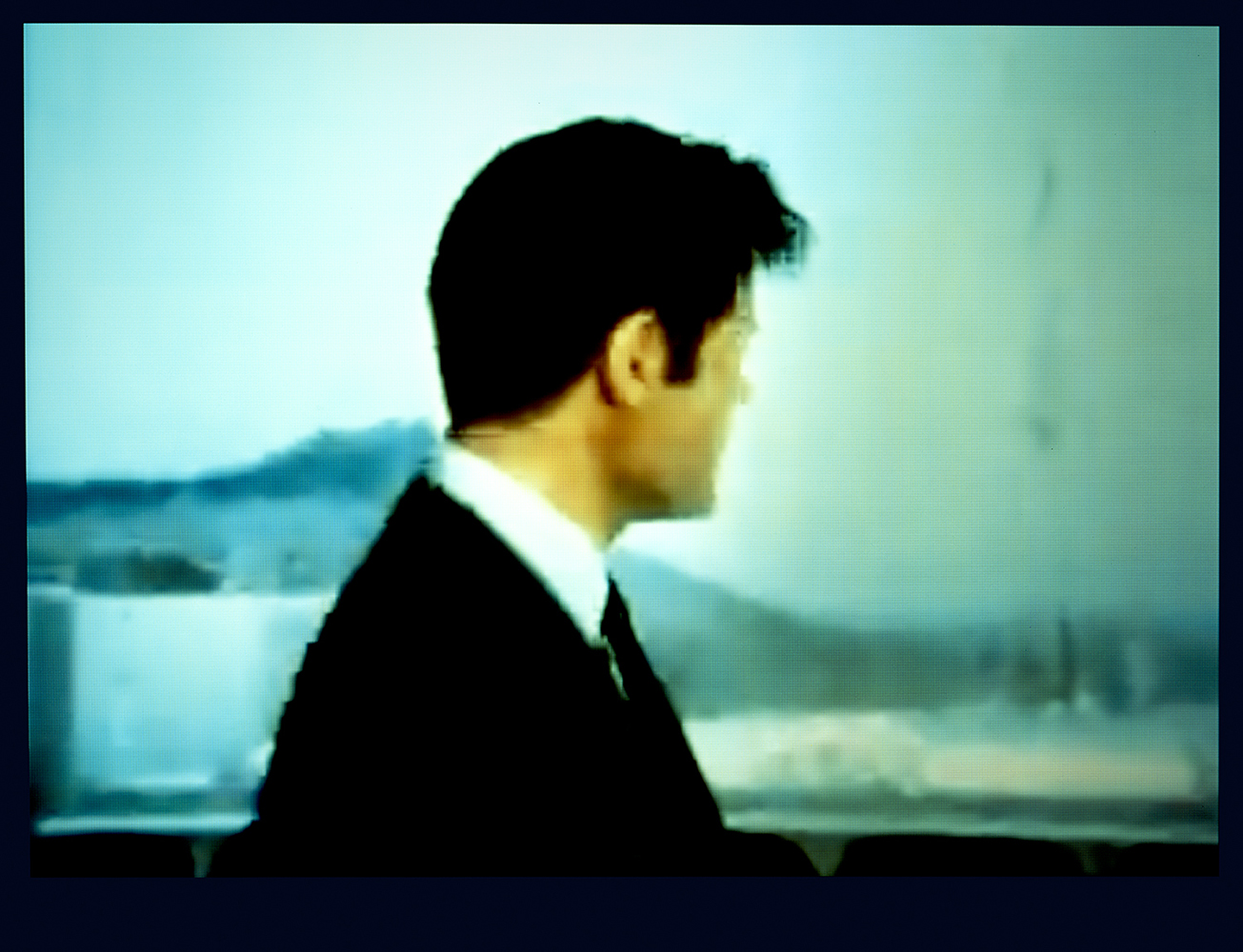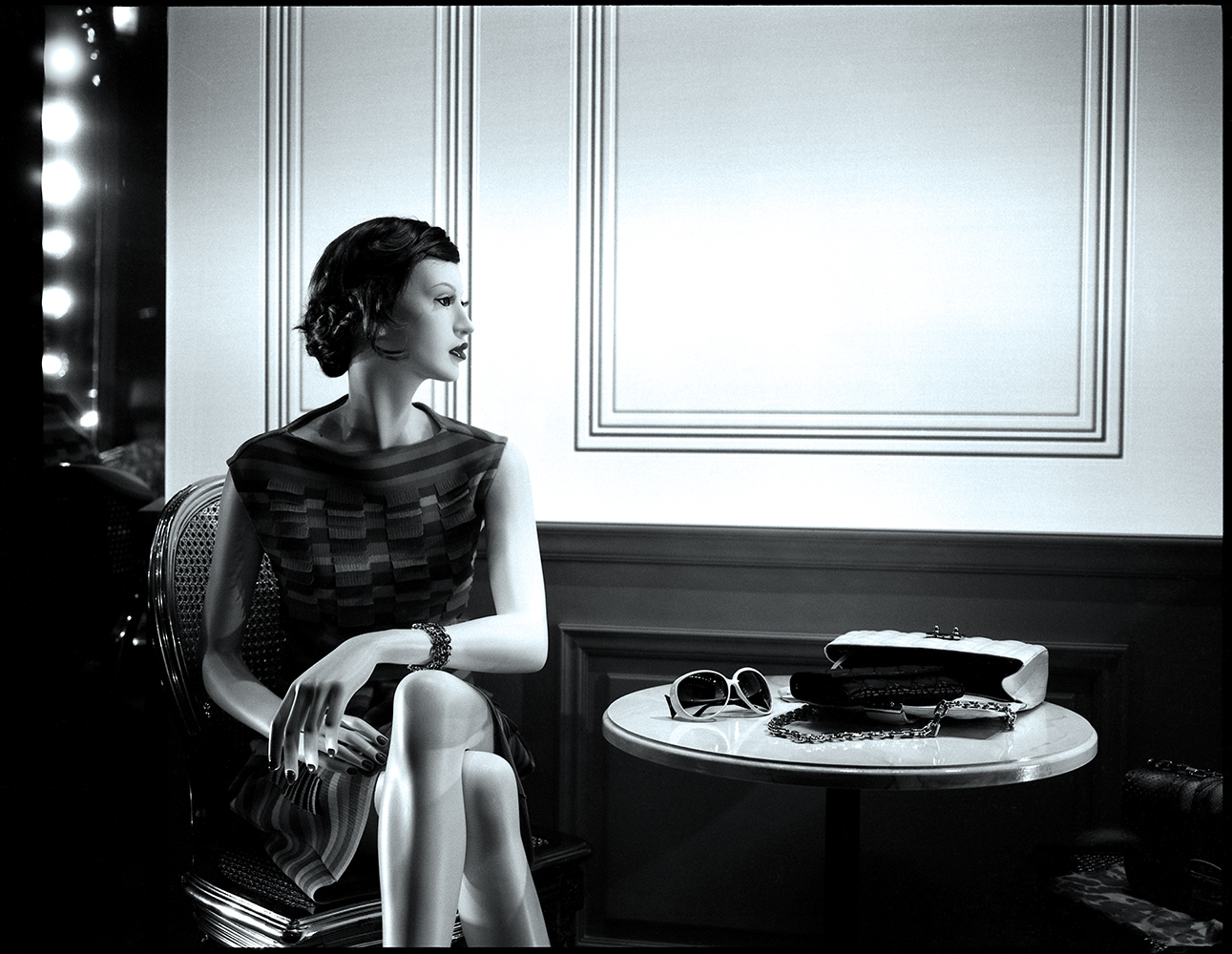The Digital Obsession – The Emperor’s New Clothes revisted
–
This is an expanded and edited version of the original writing about FakePhoneyReality, titled Editing and Authenticity, which appeared in the first Soap and Rocket episode.
Originally published on the Curating the Contemporary website December 2016.
–
The Digital Obsession – The Emperor’s New Clothes revisited.
–

Gabriel & Roxanne 96cm x 112cm
–
“A child, however, who had no important job and could only see things as his eyes showed them to him, went up to the carriage.
“The Emperor is naked,” he said.”
While thinking about ideas for this piece I found www.InternetLiveStats.com. For someone who clearly remembers an epiphany when using Google for the first time (and Skype, or a while further back a ‘video cassette recorder’) I was surprised by the awareness that the site created – of both the subject at hand, and more so, by my own, overdue recognition of numbers that I already vaguely knew.
For example, Twitter grew from 5000 tweets a day in 2007 (when I discovered and immediately dismissed it, completely confused about why anyone would be interested in – say, what I ate for lunch, or think of the weather et cetera) – to half a billion a day in 2013.
A little shy of half of the world’s population use the Internet. More than half of those people are on Facebook (– that’s roughly a quarter of the world’s population).
At the time I check, 753 pictures per second are reportedly being uploaded into Instagram. If that rate continues, after 4 months, one picture for every person on the planet will have been posted.
–

Untitled (Steve 3) 145cm x 112cm
–
The numbers handily illustrate ‘network effect’ – i.e. the more people who connect to a network, the more valuable connectivity becomes to each user, and the more attractive the network becomes to new users – and so on. And therefore the idea of how commercial economies of scale reduce the price of new technologies – and why the Internet is so lucrative.
Network effect is maths, not truth. It also explain how information with the capacity to entertain, or incite change – or both together – gets to influence so many people and enable for example, viral videos on Youtube, the quantity of porn online, or political ‘surprises’ like a Conservative second term, the Rt.Hon Jeremy Corbyn, Brexit and of course President elect Trump.
So, I thought it might be interesting to briefly expand on some abstract influences connected to our digital obsession. Naturally, I’m especially interested in those that lean towards my interest in imagery because of my practice of analog photography.
To start, is there a tipping point in the value of so much information? Will the collective interest in – culture, religion, free speech, politics, cute kittens, Russian car accidents, get rich quick schemes reach a ‘peak’? Is more really more – when will diminishing returns kick in? The growth of the Internet to cover everything and everyone reminds me of a character called Mein Herr from a story called ‘Sylvie and Bruno Concluded’ by Lewis Carroll, (first published in 1893)
“That’s another thing we’ve learned from your Nation,” said Mein Herr, “map-making. But we’ve carried it much further than you. What do you consider the largest map that would be really useful?”
“About six inches to the mile.”
“”Only six inches!”exclaimed Mein Herr. “We very soon got to six yards to the mile. Then we tried a hundred yards to the mile. And then came the grandest idea of all! We actually made a map of the country, on the scale of a mile to the mile!”
“Have you used it much?” I enquired.
“It has never been spread out, yet,” said Mein Herr: “the farmers objected: they said it would cover the whole country, and shut out the sunlight! So we now use the country itself, as its own map, and I assure you it does nearly as well.
–

Spiritual Syria 160cm x 87cm
–
In his 1962 book, The Image: A Guide to Pseudo-events in America, Daniel Boorstin notes his concern about exoteric excess – with a prescient observation about novelty –
Admiring friend – “My, that’s beautiful baby you have there!”
Mother – “Oh, that’s nothing‑you should see his photograph!”
Or consider the contemporary equivalent, the selfie – an endless stream of mutually interchangeable ‘me’. Everyone, instant satellite celebrities – all somehow living in the same place: a Möbius world where concentration and distraction have become the same thing. And where the expectations of the viewer and the ambiguity of the photographed collide – mediated by a holy trifecta of telephony, the Internet and the screen – hypnotically glowing like an incessant sunset. A ‘seashell kaleidascope’ if you will, showing enough pictures to satisfy Mein Herr’s exactitude: a map of humanity so complete, but temporal – that it feels like it’s all made up. A Fake Phony Reality.
But, and at the risk of heresy, I think authenticity – art’s bête noire – is to be found there in, precisely because of the scale of its manufactured ordinariness. It may be ephemeral to the point of absence, like negative space in a viewfinder, but it’s alive, kicking and shape shifting perhaps like Duchamp’s “infamince” – difficult to define (“one can only give examples of it”).
Dematerialisation and distribution through the Internet make the presence of an ‘original’ something no longer required to be authentic – Walter Benjamin upended. If reality is a game like Rock, paper, scissors – Broadcast beats dialogue. And an iPhone now beats a memory. Channeling and simplifying McLuhan’s “We shape our tools and afterwards our tools shape us”, Clay Shirky was right in 2008 – society has changed because the way that we communicate has changed.
The equation that once weighed the balance and difference between presence and representation has moved on. And for many, especially the kids coming through – authenticity is a touch screen image, a representation. Lee Atwater’s Machiavellian suggestion that “perception is reality” may have started out as a political strategy – but it’s an idea has since become a general truth.
–

Untitled (Omotesandō) 112cm x 96cm
–
We already know that we live in a Baudrillardian world “where there is more and more information, and less and less meaning”. Repetition and comparison abstract the purpose of an‘original’ photograph into something different, dislocated and uncontrollable. Identikit compositions show what we want to see and all we need to know. So we displace the exponential reality that a composite of image, promotional aesthetic and memory create; and store it elsewhere – relinquishing our memory and its memories to a anonymous server somewhere, anywhere. There’s ‘No neo, no post’ – just popular representation that’s even better than the real thing.
Because reality has splintered and commoditised – to become a function of crowd dynamics, where millions of different perspectives compete without a fixed universal definition or value. And each reality, personal, corporate, governmental, ‘news’ or entertainment et cetera has a mercurial metaphorical ‘price’, measured through the popularity of its presence – an image or brand – and therefore its power in the exponentially networked Internet loops. It’s just a question of which reality’s ‘price’ – whose brand – is strongest at a given time.
We Are Consumed. By a sequencing and accumulation of events, not the events themselves. We have lost control!! Plus ça change.
This is nothing new. Neal Gabler coined the idea of ‘post reality’ is his 1998 book Life: The Movie and posited that our collective desire for entertainment was the catch all reason to explain the metamorphosis of reality into – a film. Recently, Adam Curtis took up the theme, with his exploration of Alexei Yurchak‘s ‘Hyper Normality’. Worryingly, Curtis suggests that even the artists have lost control:
“Even those who thought they were attacking the system – the radicals, the artists, the musicians and our whole counter culture actually became part of the trickery. Because they to had retreated into the make believe world. Which is why their opposition has no effect and nothing ever changes”
“There’s no point in making any more images”, says artist and writer Victor Burgin. “There are already enough photographs in the world…What we need to do is re-read the images we already have.”
–
Key Bibliography
- The Image, Daniel Boorstin, 1961
- Life: The Movie, Neal Gabler, 1998
- Fahrenheit 451, Ray Bradbury, 1953
- Sylvie and Bruno Concluded, Lewis Carroll, 1893
- On Exactitude in Science, Jorge Luis Borges, translated by Andrew Hurley, 1946
- The Emperor’s New Clothes, Hans Christian Andersen, 1837